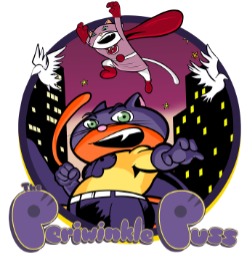
The Legend of Wonder Woman # 1-6
Written and Illustrated by: Renae De Liz
Inked, Colored, and Lettered by: Ray Dillon
Published by: DC Comics
Reviewed by: Kristian Horn
The Legend of Wonder Woman is a digital first release by DC Comics. This review covers the first six issues of the print version of this comic. If you want to read this series right away click here. Otherwise you can find the first six issues at your local comic shop.
Possibly the best Wonder Woman origin reinvention since Greg Potter and George Perez’s back in the eighties.
Yeah, there, I said it.
If you know anything about about my tastes at all by listening to the podcast you know how much of a big deal this statement is coming from me. Back in the eighties, after DC Comics annihilated their multiverse in the now-historical Crisis on Infinite Earths event, they revamped several of their core heroes. The two biggest reinventions were John Byrne’s Superman and George Perez’s Wonder Woman. Both characters were built up almost from scratch utilizing elements of their almost fifty year publication history. Batman got a soft reboot in the pages of Frank Miller’s Batman: Year One but Superman and Wonder Woman were set back to square one, almost starting over from the beginning, with new takes on their origins and a new feel to their adventures that would somewhat modernize them in order to compete with their marvelous competition across town in 1980’s Manhattan.
While John Byrne’s Superman helped set up the Man of Steel for a new generation of readers who may have somewhat decided that the Last Son of Krypton was too long in the tooth to be interesting anymore; it was George Perez’s reinvention of Wonder Woman that ended up being a really miraculous task. Truth to tell, Wonder Woman had never really been all that interesting a character in my eyes before Perez’s version came along. In all honesty, other than the Lynda Carter TV show sparking my nascent sexual desires at a young age I’d never really had any interest in the character at all. Wonder Woman was just kind of there and if Superman was considered a bore by some fans at that point, Wonder Woman was practically non-existent to a teenage kid like me at the time.
But as much as I was not a fan of Wonder Woman, I was a huge fan of George Perez. His artwork on Teen Titans and the aforementioned Crisis on Infinite Earths blew my mind as a kid and when it was announced that he would be working on Wonder Woman there was no way I was not going to read that book. Perez’s work on that series ended up being a fantastic remolding of the character and remains, to me, the best take on the character that’s ever been done. In short, George Perez’s Wonder Woman is the singular reason why I became, and still am, a huge fan of Diana of Themyscira.
For years no other run on Wonder Woman has ever equaled the terrific take that Perez had on the character. Oh, Brian Azzarello and Cliff Chiang came close but their version mucked around with Diana’s origin too much for me to be happy with it. But now, in the pages of The Legend of Wonder Woman, I’ve come across a version of her origin that I’m finding as interesting a read as Perez’s was to me back in the good old 1980’s.
It’s going to be a bit hard for me to explain why I love this version of Wonder Woman so much without possibly coming across as a chauvinist in some way. The biggest reason I see this Wonder Woman comic as such a refreshing take on the character is that it seems to lack a need to interject a certain amount of testosterone fueled drama into it at every turn. Just about every take on Wonder Woman before this one has been steered by a male creator. Heck, the character herself was created by a man. Yes, there have been chunks of time when Wonder Woman has been written by women (see Gail Simone’s run on the character) but even then there always seemed to be some sort of directive from on high to drive the ship into over the top super heroic action territory or to at least somewhat sexualize her to bring the male audience in. Both of these directives always seemed to me to be to be a dumbfounding way to approach a character who was meant to be an inspiration to women and girls everywhere.
And that’s why this iteration of Wonder Woman is so exciting to me…because it seems to lack that need to draw in the stereotypical male comic book reader…and that’s a good thing.
Renae De Liz brings a decidedly more restrained and poetic viewpoint to the origin of Wonder Woman. The aggression of previous iterations is gone and what is left behind is a very balanced and sensitive story of a woman who is trying to find her place in the world. Diana has always been somewhat of an outsider, both on Thymiscira and in the “world of man”, and writer skillfully plays with the convention of being a strange woman in a strange land without engaging in any of the teeth-grinding angst that has embraced the souls of so many superheroes for years. Instead of delving into superhero soap operatics, De Liz tells a tale of a Diana who seems to be on more of a spiritual quest to discover her identity. While this sort of story has been very much a staple of Wonder Woman’s history, this is one of the few times I’ve felt that the nature of Diana’s journey isn’t obscured by the need to tell a superhero tale. This could possibly be the only time when I’ve read a Wonder Woman story and felt less like I’m reading about a super heroine and more about an actual woman.
De Liz approaches Diana’s origin story with patience, letting the story unravel in a very deliberate fashion. Nothing feels rushed or forced and the tale of Wonder Woman’s birth is given time to breathe and grow somewhat organically. The pacing may be a bit slower than what many fans would expect from a superhero comic but that makes the actual narrative more relatable and makes Diana a character that readers can possibly identify with a bit more than in previous iterations of this heroine. The nature of the storytelling gives Diana time to explore her own origins as well as her relationship with others in the story. The woman who will become Wonder Woman in this book is given time to bond with her supporting players and that bonding is the perfect device to show how she’s able to grow during the course of the series. Much of the comic is given to character development with the supernatural or super heroic elements almost taking a back seat to the events and people that will shape the Princess of Thymiscira’s life. Heck, Diana doesn’t even really technically don her signature tiara and bracelets until issue six!
If this sort of thing sounds like it could be a bit boring to you, let me assure you that it isn’t. I see much of the Legend of Wonder Woman as an interesting new way to tell a story about a super heroine. One that may be targeted more towards a more female, or dare I say it, more mature audience willing to embrace character over sexuality or bombastic action.
Much of what makes this book work is the stunning work of the wife and husband art team of De Liz and Dillon. This comic is, simply put, beautiful to look at. De Liz’s work reminds me very much of early Dale Keown or Paul Pelletier but with a flexibility and smoothness of line that neither one of those artists displayed in the beginnings of their careers. The line work here is firm but even, portraying a sensitive curve to the figures that is backed up by a strength in form that gives this Wonder Woman story the balance it needs to satisfy visually. The line art is expertly and stunningly complemented by Dillon’s work on the book. All in all it is the visuals of this comic that make it rise above just being a typical Wonder Woman comic. Each page is so gorgeous to look at that as you flip through the comic it becomes an exercise on how to illustrate a Wonder Woman comic correctly. Diana and her female co-stars are rendered respectfully and beautifully and the world they inhabit is gorgeous. De Liz and Dillon have really done an impressive job and I think this may be the best looking Wonder Woman comic I’ve set eyes on in years.
I could go on raving about this book for paragraphs but I would be remiss if I didn’t point out some of its weaknesses as well. The biggest of which tends to be that it’s loaded with expositionary narration and dialogue. As I mentioned before, this tends aid in slowing the book’s pacing a bit, but in the end the story remains satisfying. Much of the overloaded dialogue mostly shows up once Etta Candy is introduced (Wonder Woman’s human “sidekick” through the years) but she ends up being such a delightful character that I tended to want to forgive the overabundance of unnecessary verbiage. Besides, this is probably the best version of Etta I’ve ever seen in a comic so I’m willing to forgive the character’s running of the mouth if it helps her become the enjoyable person she is in this comic.
I originally picked up this book as a comic to read with my young daughter to introduce her to an appropriate comic book version of Wonder Woman that wasn’t too violent or salacious. As many comic book fans know, Wonder Woman can be a tricky character to introduce to young girls. Throughout so much of her history (especially in the past thirty or so years) she’s been portrayed as much as a sex object as a defender of justice. In this book De Liz finally seems to have found the core of the character so many other interpretations have failed to capture. In embracing a more reserved and mature method of storytelling De Liz may have finally moved Wonder Woman into becoming a character that girls of the 21st century can look up to and embrace. This Wonder Woman is the version of the character that DC Comics should be fully exploring because this is a Wonder Woman for a new age that fans male and female won’t be embarrassed in any way to take pride in.



